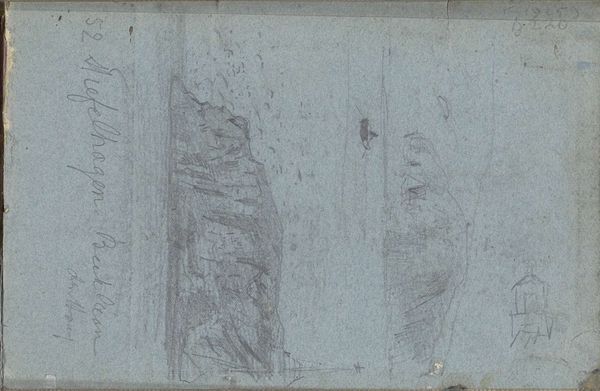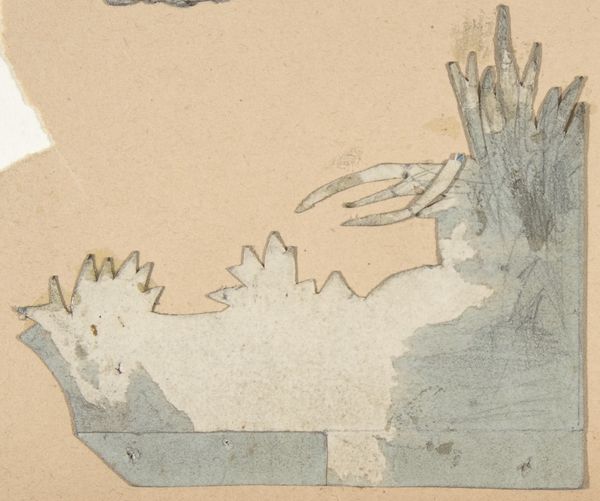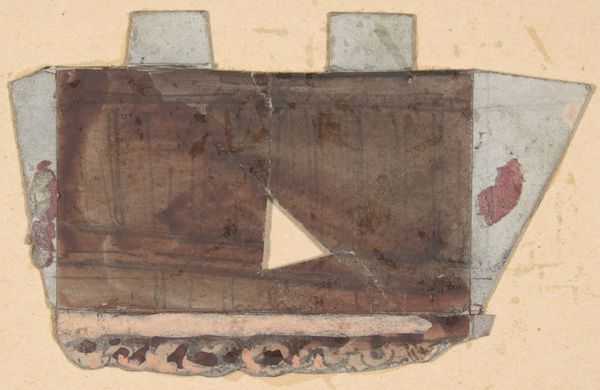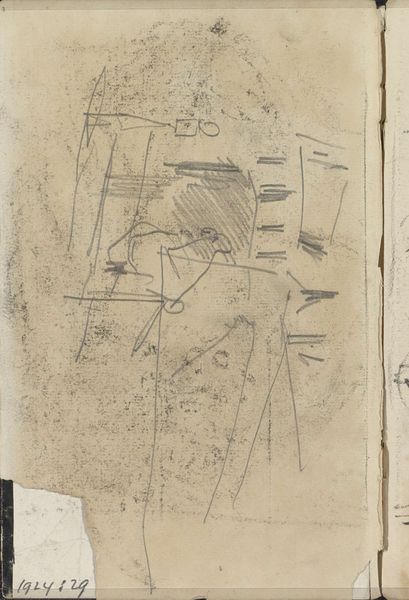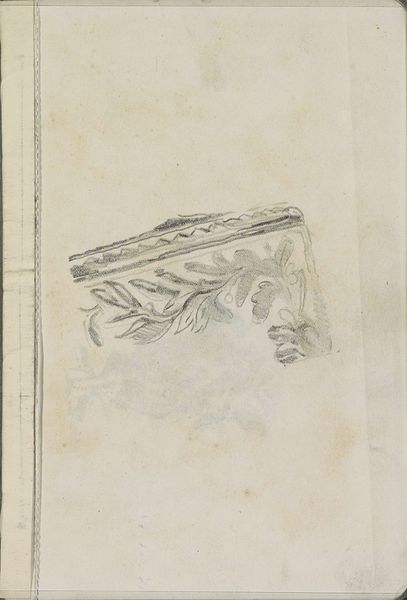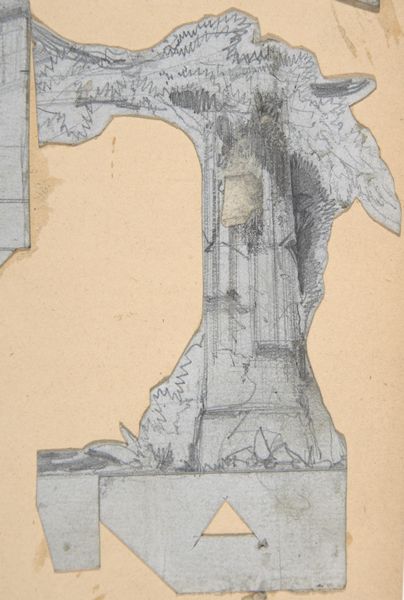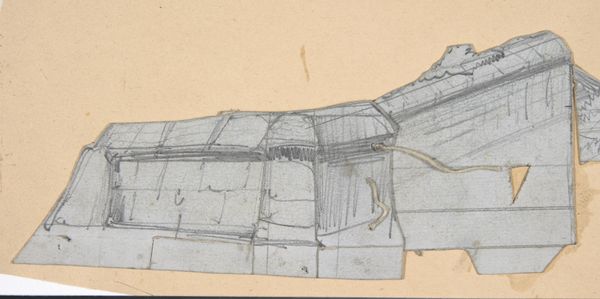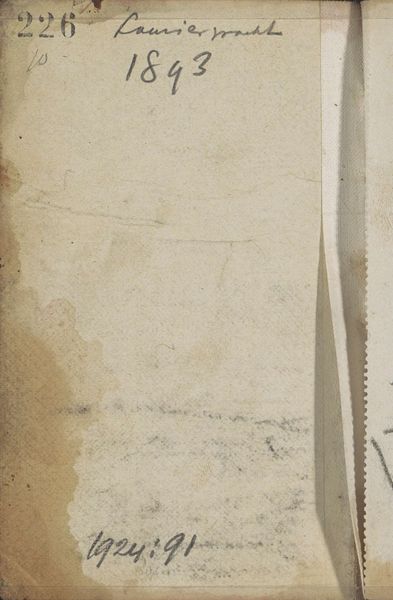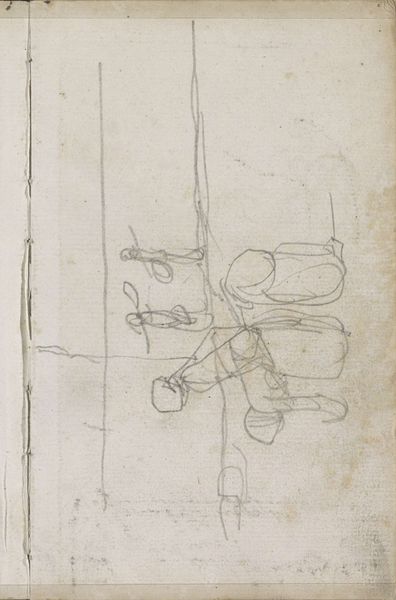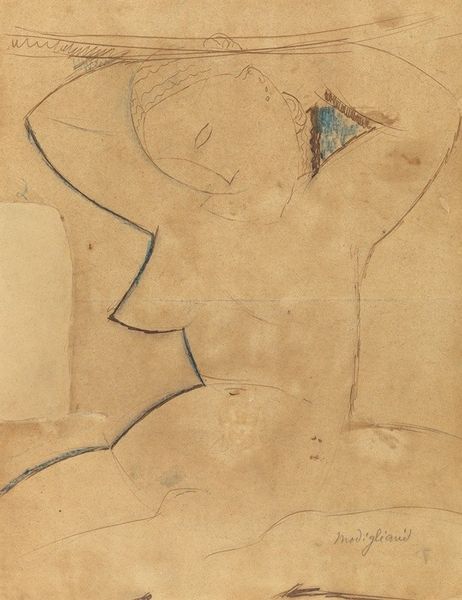
Design for a Stage Set at the Opéra, Paris 1830 - 1890
0:00
0:00
Dimensions: Irregular sheet: 3 1/16 x 2 in. (7.8 x 5.1 cm)
Copyright: Public Domain
Curator: This drawing, “Design for a Stage Set at the Opéra, Paris,” was created by Eugène Cicéri, sometime between 1830 and 1890. It’s now part of the Metropolitan Museum's collection and is made with pencil and coloured pencil. What strikes you about it? Editor: Immediately, I’m struck by how fragile and ethereal it looks. There's a definite sense of incompleteness to the scene, and the limited use of colour reinforces this dreamlike quality. I almost feel like I'm looking at a half-remembered space. Curator: The Romantic style prevalent in the 19th century placed significant emphasis on emotion and subjectivity, often portraying history as a backdrop for intense personal drama. This design reflects the symbolic aspirations of that time, doesn't it? It reminds us of history painting that evokes nostalgia and yearning. Editor: I agree, but I see something more conflicted. Opera at that time was a powerful expression of social and political control, especially in Paris. Seeing a "fragment" such as this evokes feelings that perhaps point to a broken dream – and raises questions about whose stories and voices are centered on such grand stages? Who is invited, who is not? And who creates these elaborate fantasies? Curator: Fascinating. Perhaps the fragment highlights the impermanence of grandeur and societal spectacle. Notice, for example, how architectural forms carry symbolic meaning - even unfinished or suggested. This could evoke not only the ambition of the Opera, but also perhaps its ultimate transience or transformation over time. Editor: Right, this makes me think about the social upheaval happening in France in the 19th century. The unfinished nature of this work perhaps speaks to broader cultural and political instability—it reminds us that behind the gilded veneer of artistic and cultural institutions lie complex and often turbulent historical contexts. It feels almost radical for a piece tied to a very establishment venue like the Paris Opera. Curator: So, for you, the artwork reflects themes of fragmentation and social critique. For me, I’m fascinated by how a simple stage design encapsulates this Romantic desire to translate historical understanding through symbolic, idealized—if fleeting—visions. Editor: Yes, exactly! And through this lens, a simple sketch evolves into an echo of both possibility and constraint.
Comments
No comments
Be the first to comment and join the conversation on the ultimate creative platform.

